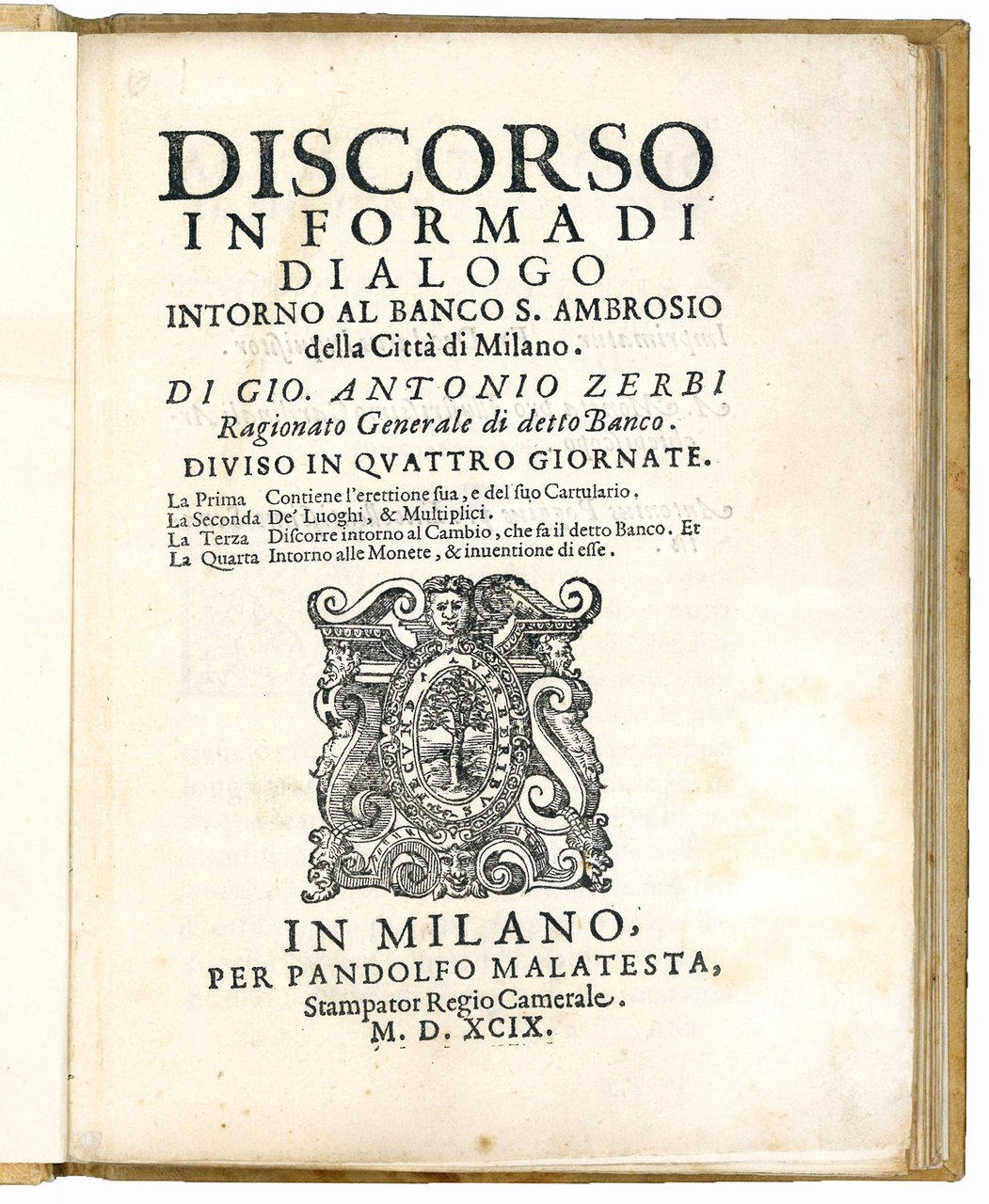
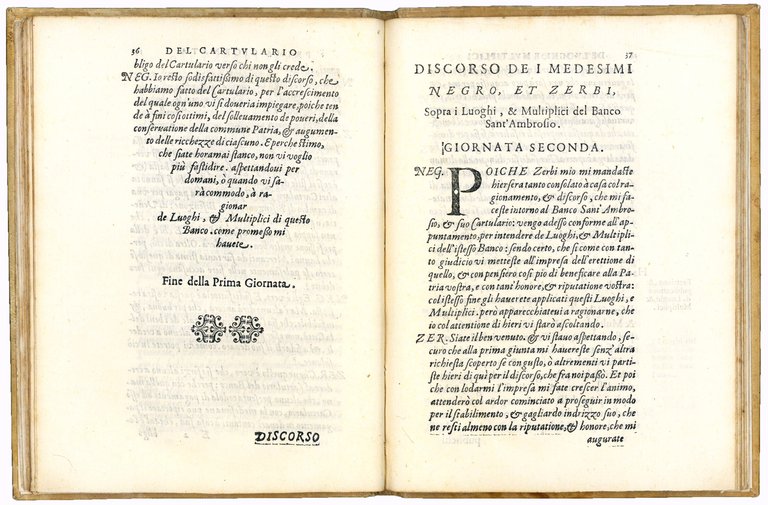
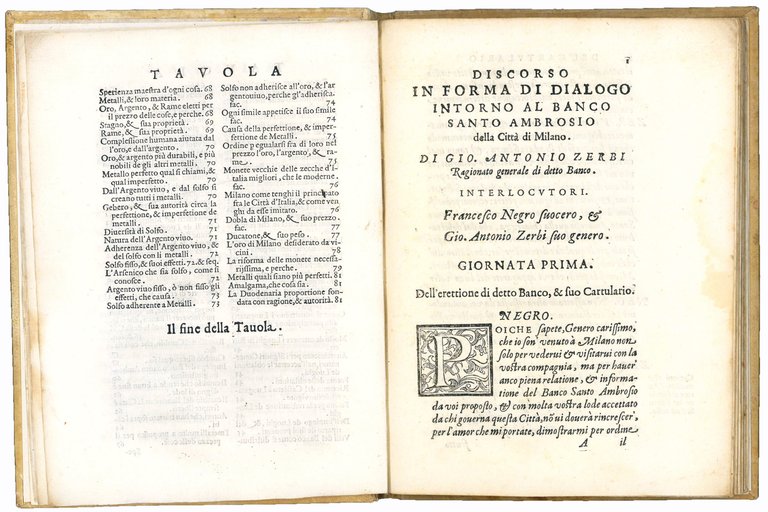
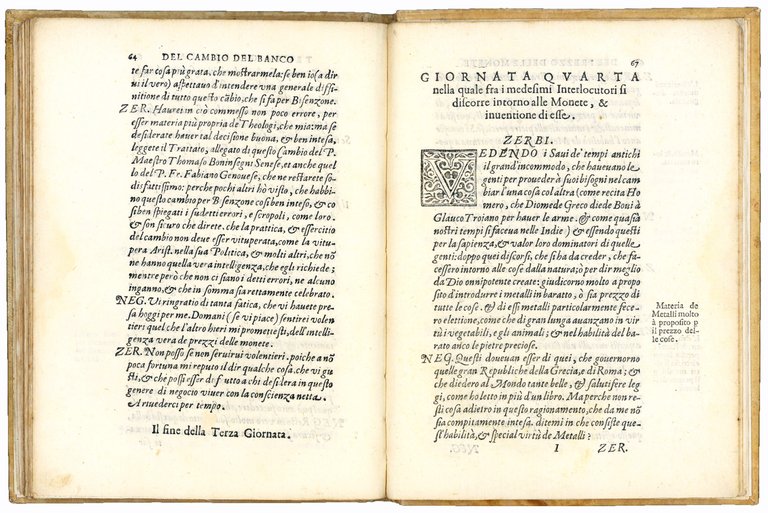
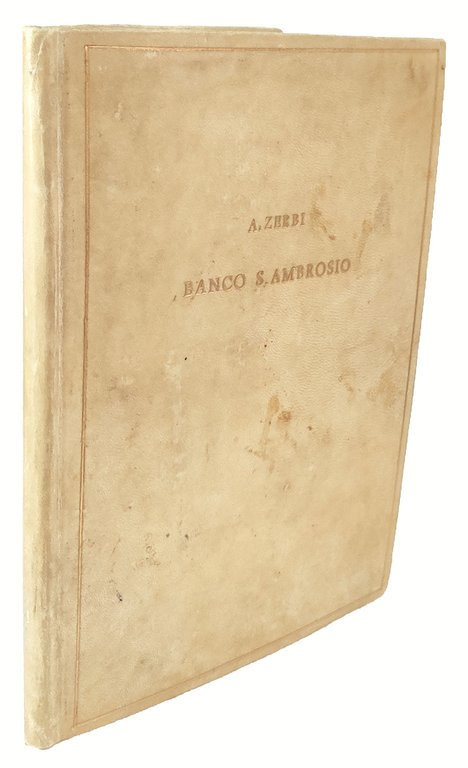
Livres anciens et modernes
ZERBI, Giovanni Antonio (1562-1601)
Discorso in forma di dialogo intorno al Banco S. Ambrosio della Città di Milano. Di Gio. Antonio Zerbi Ragionato Generale di detto Banco. Diviso in quattro giornate. La Prima Contiene l'erettione sua, e del suo Cartulario. La Seconda De' Luoghi, et Multiplici. La Terza Discorre intorno al Cambio, che fà detto Banco. Et La Quarta Intorno alle Monete, et inventione di esse
Pandolfo Malatesta, 1599
7500,00 €
Govi Libreria Antiquaria
(Modena, Italie)
Les frais d'expédition corrects sont calculés une fois que l'adresse de livraison a été indiquée lors de la création de la commande. Un ou plusieurs modes de livraison sont disponibles à la discrétion du vendeur : standard, express, economy, in store pick-up.
Conditions d'expédition de la Librairie:
Pour les articles dont le prix est supérieur à 300 euros, il est possible de demander un plan de paiement échelonné à Maremagnum. Le paiement peut être effectué avec Carta del Docente, Carta della cultura giovani e del merito, Public Administration.
Les délais de livraison sont estimés en fonction du temps d'expédition de la librairie et de la livraison par le transporteur. En cas de retenue douanière, des retards de livraison peuvent survenir. Les frais de douane éventuels sont à la charge du destinataire.
Pour plus d'informationsMode de Paiement
- PayPal
- Carte bancaire
- Virement bancaire
-
-
Découvrez comment utiliser
votre Carta del Docente -
Découvrez comment utiliser
votre Carta della cultura giovani e del merito
Détails
Description
4to (210x156 mm). [8], 82 [i.e. 80] pp. Collation: ¶4 A-K4. With the printer's device on the title page. Woodcut decorative initials. Roman and italic type. Issue A with the omission in pagination of pp. 65/66. Modern stiff vellum with gilt title on the front panel within a gilt frame. Two tiny holes repaired on the title page not affecting the text. A good copy.
Rare original and most complete edition, dedicated to Ivan Fernandez de Velasco, governor of the State of Milan. This is one of the earliest printed treatises on in-house banking procedures (cf. E.L. Jäger, Die ältesten Banken und der Ursprung des Wechsels, Stuttgart, 1879, pp. 48-64).
Zerbi, a Milanese business man and an expert in public and private financial matters, proposed during his stay at the Spanish court to king Philip II the establishment of a public bank in Madrid modelled on the Banco di San Giorgio of Genoa. But his project did not find a fertile soil in Spain. Back in Milan he presented his plans to the city of Milan and obtained in 1593 the concession for the establishment of the Banco di Sant'Ambrosio.
In the same year he published a first draft of his innovative ideas in the Dialogo del Banco di S. Ambrosio and in the following year a treatise on bills of exchange with the title De grossi interessi dei cambi tra la R. Ducal Camera, la Città di Milano e i negozianti. The expected success of the Banco di S. Ambrosio, however, failed to appear (according to Zerbi because of the only partial realization of his plan). This induced him to publish Del Banco di S. Ambrosio proposto all incita città di Milano in two books, which can be seen as a first statement of his activities and new projects, which was expanded into its definitive version in four books in the present Discorso, in which he solicited the city authorities to concede to the Banco the right to issue shares and thus to stimulate more citizens to invest their money in the Banco. The statues of the Banco di S. Ambrosio date from 1601 and its activities are traceable until the beginning of the nineteenth century. The Banco was probably the second public bank to be established following the Banco di Rialto in Venice (founded between 1584 and 1587) and its early activities are generally considered to be the first important steps toward modern banking (cf. A. Cova, Il Banco di Sant'Ambrogio nell'economia milanese del XVII e XVIII secolo, Milan, 1972, pp. 23-41).
Zerbi had the important position of “ragionato generale” in the bank, and his duties were among others to establish the amount of money disposable for investments, to calculate the profits and distribute them among the depositors and to control the book-keeping.
The four parts of the Dialogo are written in form of a dialogue between Zerbi himself and Francesco Negri, his father-in-law (seen as future client of the bank). In the first dialogue (or day), the author explains the reasons for the creation of the Banco and its practical benefits. In particular, he explains the economic advantages of the cartulario, an official register book in which payments made by citizens to the Banco were recorded. In modern terms, registering with the cartulario is like opening a checking account, which does not pay interest on the capital but allows the holder to pay by means of a poliza, a sort of cheque to bearer. The advantage for the city of Milan is that, since most payments between citizens are made this way, the bank's capital never leaves its coffers and can be used for public works.
On the second day, Zerbi discusses the advantages of the luoghi, i.e. the shares that the citizens can buy in quantities and at prices determined by the bank, and which allow them to collect, on a quarterly basis, half of the interest that the city of Milan pays to the bank on the capital lent. The other half of the interest is reserved for the payment of the bank's employees. A special type of luogo is the mul

